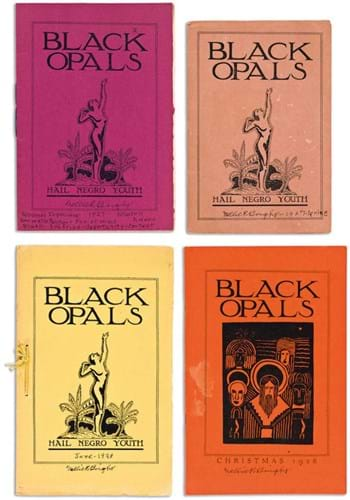It was offered in an African Americana sale held by Swann (25/20/12% buyer’s premium) in New York on March 25.
That letter, billed as one of his most enduring works, had its beginnings on scraps of paper smuggled into an Alabama prison by one of the guards.
There it went through various revisions before being distributed locally to churches and making its first partial appearance in print in May of that year. It went on to be published in hundreds of books, newspapers, magazines and pamphlets.
Influential magazine
Billed as legendary and bid to a far higher than estimated $36,000 (£26,275) in the New York sale was a complete run in original wrappers of Black Opals. Just four issues of this slim and short-lived but very influential literary magazine appeared in the years 1927-28.
Described as closely tied to the Harlem Renaissance and sub-titled ‘Hail Negro Youth’, these slim issues ran to just 16-20pp and quite modest print runs of only 250 copies, or in the last issue, just 200.
Featuring work by Alain Locke, Jessie Redmon Fauset, Langston Hughes and others, this rare complete set was that kept by Nellie Rathbone Brighton, a member of the magazine’s small editorial team who has added her inscription to the front wrapper of each issue. The first issue is also signed by Langston Hughes and three others.
In 2017, said the saleroom, an event at Philadelphia’s Rosenbach Library was dedicated to the journal’s influence, but they could trace complete of runs of Black Opals in only two institutional collections: the Schomburg Center for Research in Black Culture in New York and the Free Library of Philadelphia.
Emancipation call
Other highlights at Swann included, at $36,000 (£26,275), a stained and worn copy of Banneker’s Almanack, and Ephemeris for the Year of our Lord 1793, only the second of the almanacs produced by a black scientist and surveyor in the years 1791-96.
Benjamin Banneker corresponded with Thomas Jefferson about his almanac in 1791 and in this issue included a long abstract from Jefferson’s ‘Notes on Virginia’ in which he expresses his hopes for “total emancipation … with the consent of the masters, rather than by their extirpation”.














